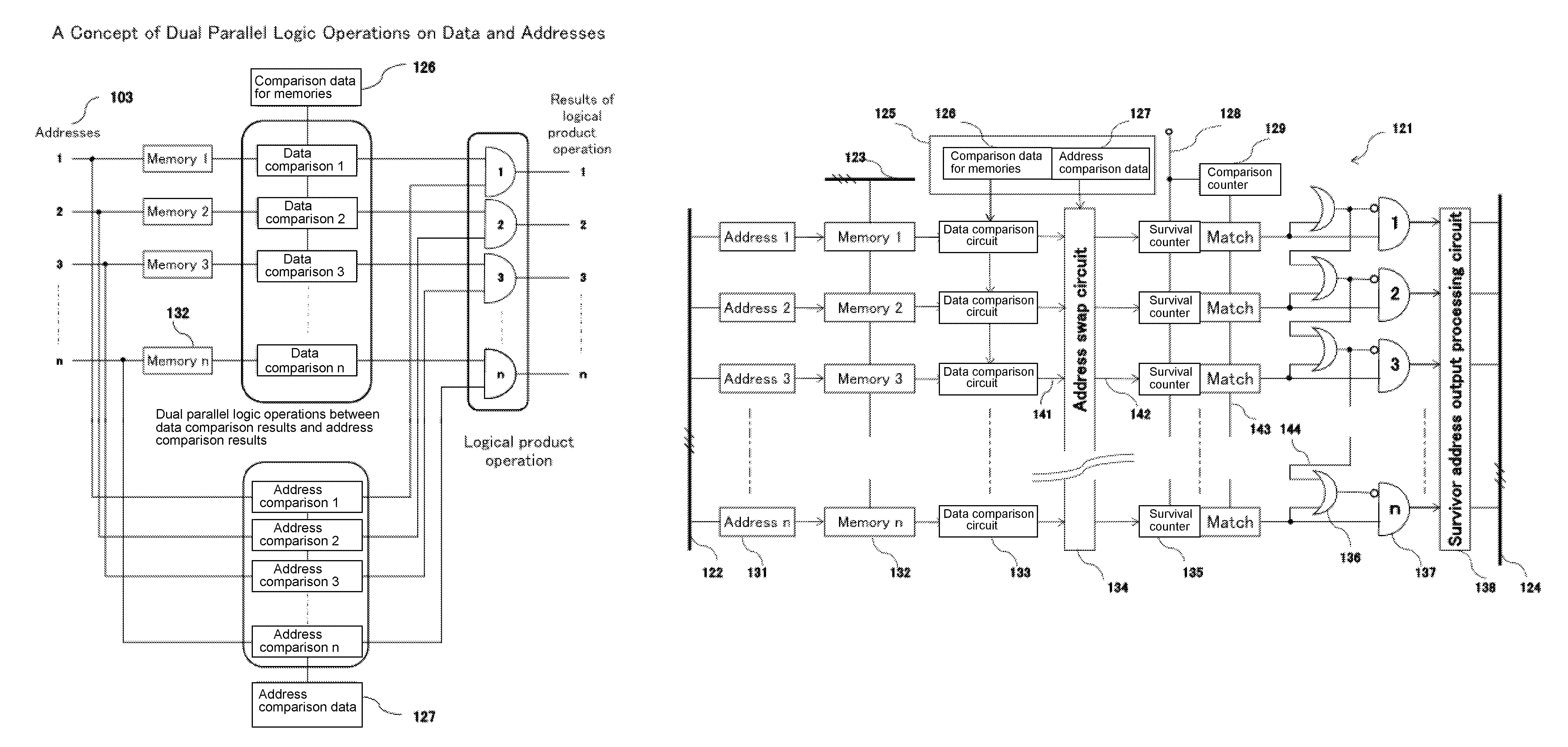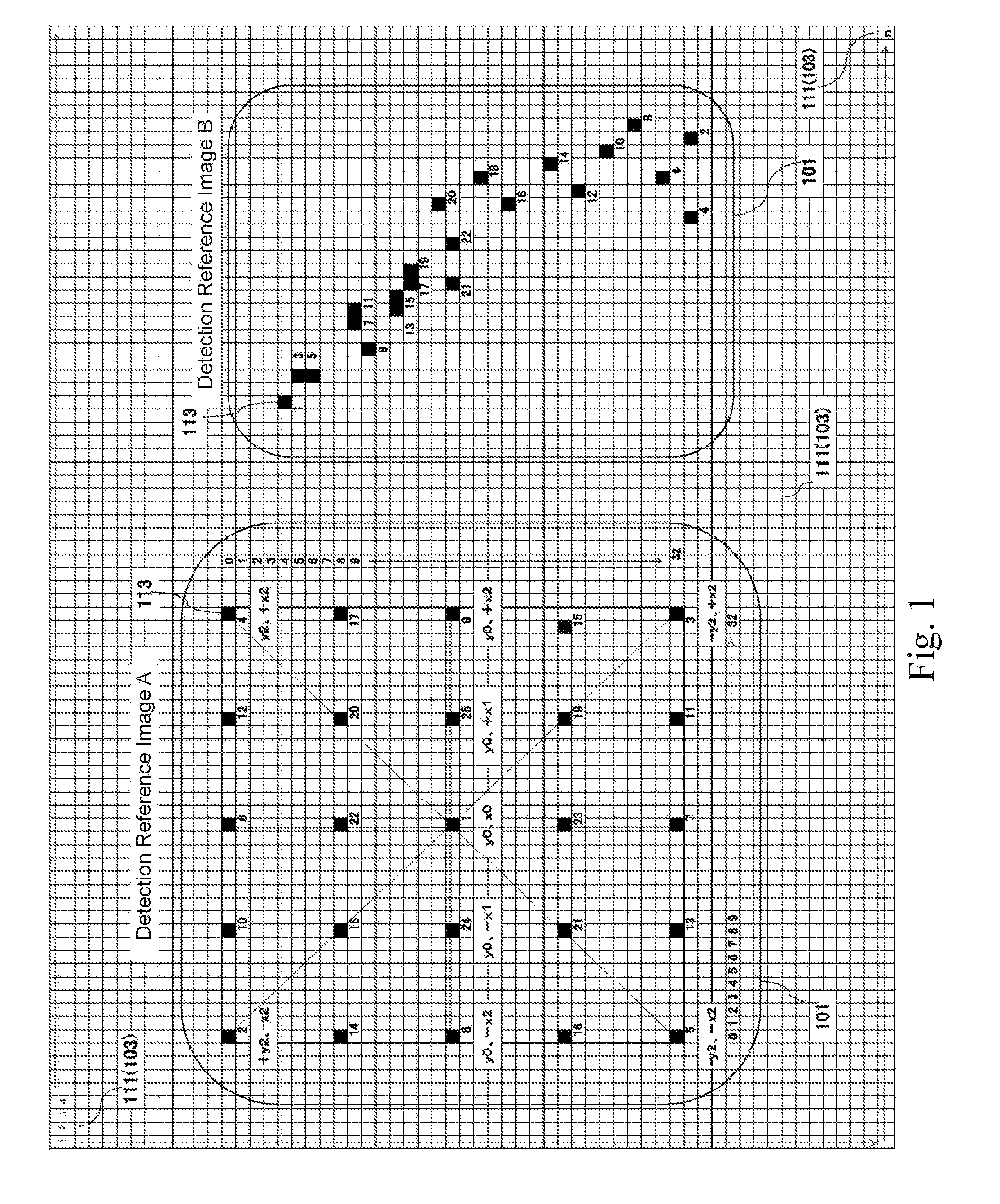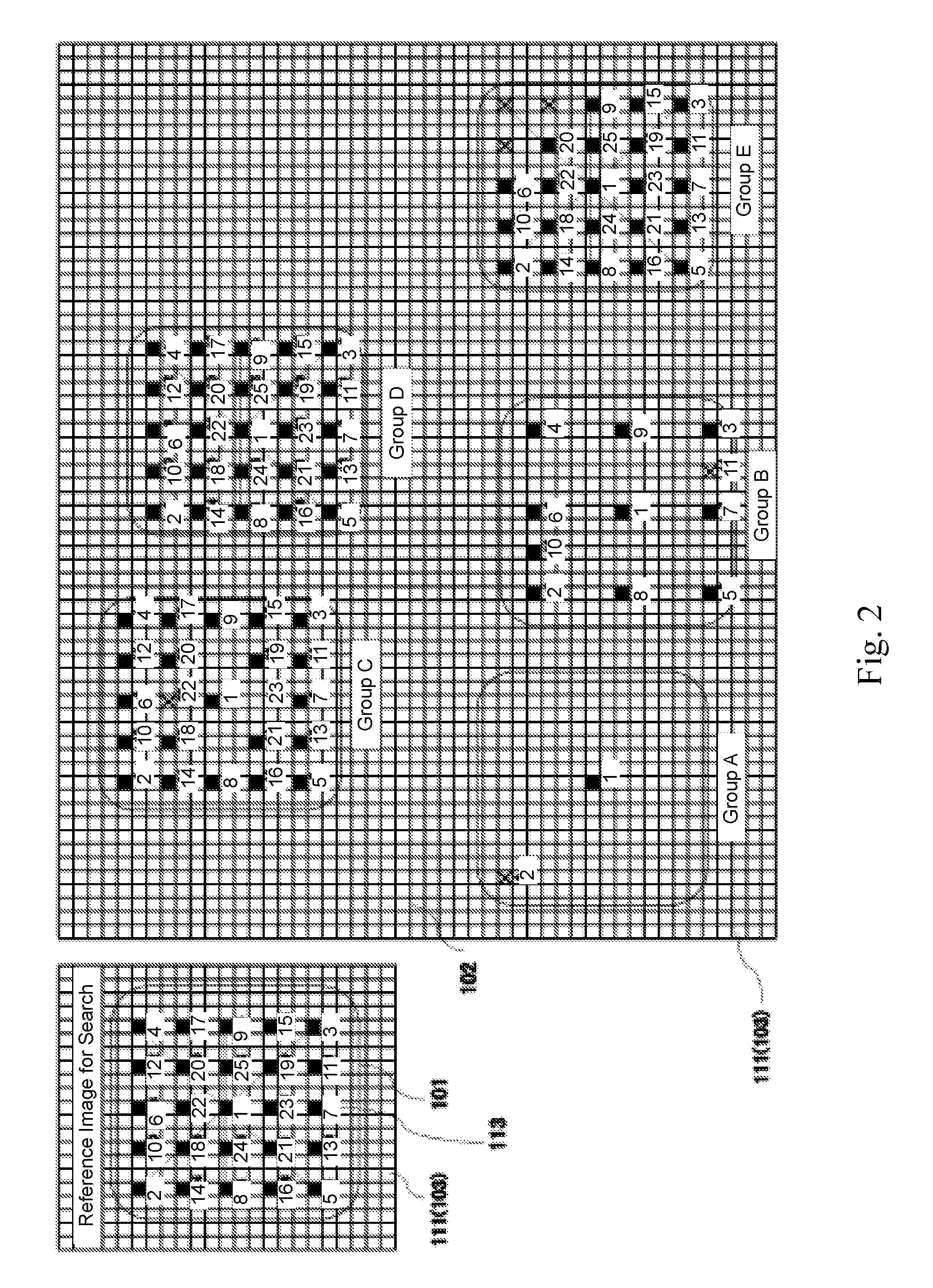Memory having information refinement detection function by applying a logic operation in parallel for each memory address to the match/mismatch results of data items and memory addresses, information detection method using memory, and memory address comparison circuit for the memory
a technology of information refinement and memory address, applied in the field of memory providing with information refinement detection function, can solve the problems of memory not being used, memory may be damaged, and no example of technique or memory found to essentially avoid sequential processing, etc., to accelerate the speed and advancement of information processing, the effect of fast detection and analysis
- Summary
- Abstract
- Description
- Claims
- Application Information
AI Technical Summary
Benefits of technology
Problems solved by technology
Method used
Image
Examples
embodiment example 1
[0140]FIG. 1 (sampling-point example) depicts sampling points 113 of an image as a detection reference (e.g., known information 101) and n pixels 111, i.e., 1, 2, 3, 4, . . . , n from the upper-left corner to the lower-right corner of a screen, whose data is stored in the same order in memory addresses 103, i.e., 1, 2, 3, 4, . . . , n.
[0141]A detection reference image A is directed to relatively a small-size image and has its center coordinate (y0, x0) and surrounding 24 coordinates which are automatically arranged with equal spacing as sampling points 113, and makes up 25 sampling points 113 in total on an area of this detection reference image (e.g., known information 101), wherein this area covers 33 pixels in the X- and Y-axes, respectively, that is 1089 pixels in total. However, the size of the detection reference image may be larger than this example.
[0142]In this example, the numbers from 1 to 25 in FIG. 1 indicate a sample comparison order, wherein the center is the base poi...
embodiment example 2
[0145]FIG. 2 (embodiment example of information detection using sampling points) depicts image detection examples using the detection reference image A of FIG. 1 as a reference image. FIG. 2 depicts an image as a detection reference (e.g., known information 101) and images which are subject to search (e.g., unknown information 102).
[0146]In this figure, the group A of the unknown information 102 is an example which had a match in a first comparison but had no match and rejected in a second comparison; the group B and the group C were rejected in a eleventh and a twenty-second comparisons, respectively; and the group D had matches for all of its sampling points. In these searches, the above-described coordinate data for each address may be simply read and compared with that of the detection reference image.
[0147]In this figure, although the groups A to E are depicted as completely separated from one another in an image area, the above technique works if relative location relationship...
embodiment example 3
[0158]FIG. 3 (an example method of evaluating sampling points) illustrates an evaluation of effectiveness of the sampling points 113 in image identification using the detection reference image A of FIG. 1, depicting 16 groups, i.e., groups A to P each consisting of four adjacent sampling points 113, taken from the 25 sampling points 113 from the coordinate 1 as a detection reference coordinate to the last coordinate 25.
[0159]For example, the group A includes four sampling points 113, i.e., 2, 10, 14 and 18, the group B includes different four sampling points 113, i.e., 10, 6, 18 and 22 and so forth.
[0160]In this case, since differences of data such as brightness or color information among intra-group coordinates are related with the magnitude of characteristics, in other words, the magnitude of a sample characteristic quantity, the characteristic quantity for each group may be obtained by calculating the absolute value of data differences between two intra-group sample points for si...
PUM
 Login to View More
Login to View More Abstract
Description
Claims
Application Information
 Login to View More
Login to View More - R&D
- Intellectual Property
- Life Sciences
- Materials
- Tech Scout
- Unparalleled Data Quality
- Higher Quality Content
- 60% Fewer Hallucinations
Browse by: Latest US Patents, China's latest patents, Technical Efficacy Thesaurus, Application Domain, Technology Topic, Popular Technical Reports.
© 2025 PatSnap. All rights reserved.Legal|Privacy policy|Modern Slavery Act Transparency Statement|Sitemap|About US| Contact US: help@patsnap.com



